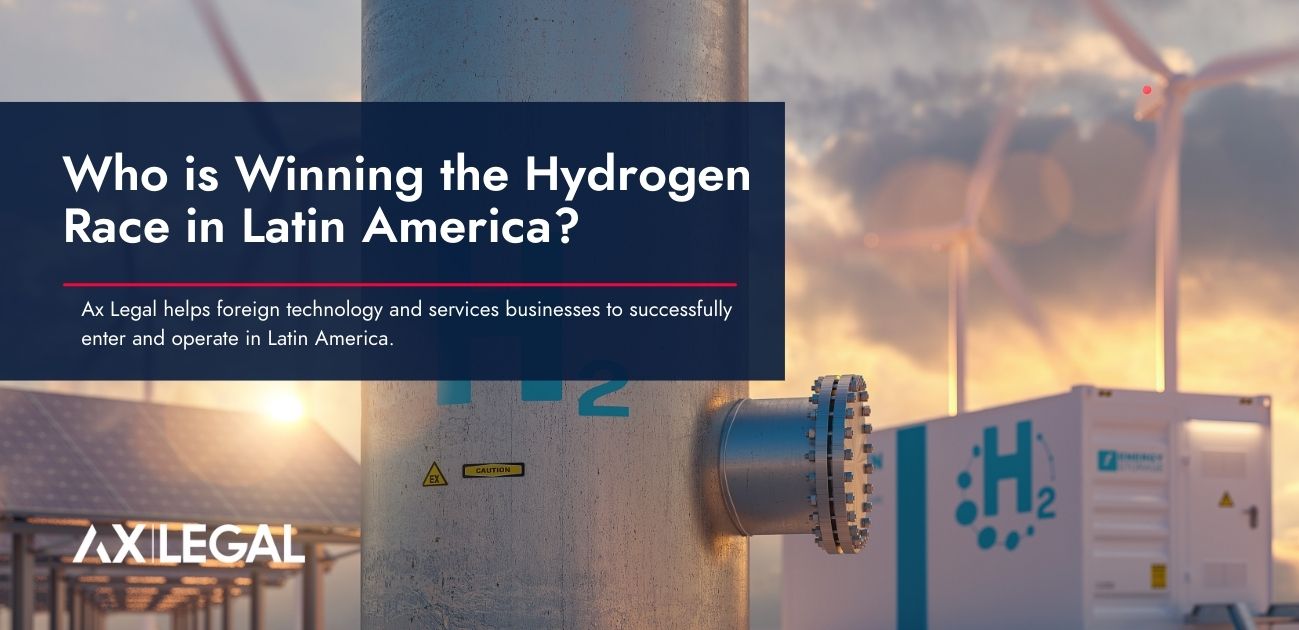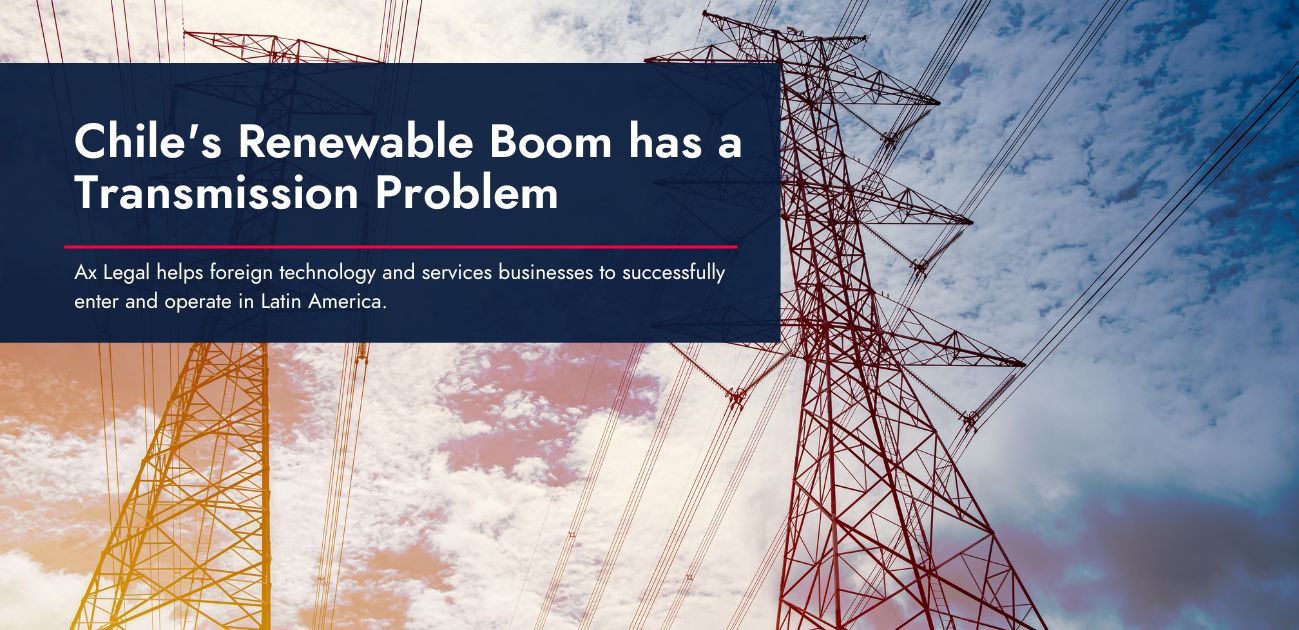Who is Winning the Hydrogen Race in Latin America?
Latin America has the right conditions to become a major hydrogen production hub. It is forecasted that the region will be able to offer highly competitive prices to international markets due to the abundance of renewable resources that have been built to date and/or could be built in the future.
Although this is true, only having the clean energy sources alone will not make any of the Latin American countries a global player. To build a sustainable industry, each country will need to have well thought out public policies, the ability to attract huge amounts of foreign investment, international partnerships, and the ability to export the final product to international markets.
H2LAC, an industry group, recently released its regional Index to rank countries in Latin America on their progress so far. The researchers looked at the public policies, level of ecosystem development, number of projects in operation or under development, level of adoption of hydrogen-based transport and mobility, and level of international cooperation and hydrogen-export planning. All the above considered important factors where Latin American countries currently stand.
Rankings
The ranking provided points with a full 100 indicating that a country is starting to have a mature hydrogen market. As context, well prepared countries such as Germany and Japan would rank very close to the full 100 points.
According to the second H2LAC Index, the leading countries are –
| Chile | 65 points | 25 under development | 3 operational |
| Colombia | 57 points | 10 under development | 2 operational |
| Brazil | 51 pointa | 20 under developmen | 4 operational |
| Uruguay | 42 points | 2 under development | 0 operational |
| Argentina | 37 points | 6 under development | 1 operational |
Chile
In 2020, Chile released its green hydrogen strategy which set out to make the country the top destination for hydrogen investment in Latin America by 2025 with at least 5 GW of electrolysis capacity operating and producing 200k/tons of hydrogen per year.
The country ranks first in the index because of the government incentives from the public sector, high interest from the industry, and the agreements on international cooperation it has signed.
Chile has developed a project pipeline of 25 projects which are under development. Some examples of these projects include the 10GW initiative H2 Magallanes which is planned to be built in the South. There is already a pilot production complex, know as the Haru Oni demonstration plant in operation which will converted to into a utility-scale facility. It will be powered by a US$500mn wind farm that was recently submitted for environmental evaluation.
You can review a previous article we did on the project pipeline here.
Colombia
Colombia has risen in the rankings from fifth place last year to second this year. The rise in rankings is due to the publication of a hydrogen roadmap, the founding of an industry association, and the promotion of financial incentives, among them tax breaks.
Colombia plans to have up to 3GW of electrolysis capacity by 2030 and wants to have wide-scale adoption of fuel-cell vehicles. In addition to green hydrogen, the roadmap sets a target of 50 kilotons of blue hydrogen capacity derived from natural gas over the same period. A difference in strategy from other Latin American countries.
Blue and green hydrogen projects will be eligible for the same tax breaks as non-conventional renewable energy developments. This includes income tax deductions for up to 50% of investments, an exemption from value-added tax on equipment and services, and accelerated depreciation.
Ecopetrol launched its first green-hydrogen pilot project earlier in 2022 at its refinery in Cartagena. Using a 50-kilowatt Proton Exchange Membrane electrolyzer, 270 solar panels, and water used by the refinery, Ecopetrol will produce 20 kg (44 lb) of high-purity green hydrogen at this first demonstration.
Promigas has built a 137-kW solar farm and water from the Cartagena aqueduct network to produce green hydrogen which will injected into the natural gas grid. The company said it would produce around 1,574 kilogrammes of hydrogen annually for blending purposes in the first phase. The pilot plant was designed to be scaled up in five phases, which would enable the production of up to 15 tonnes of hydrogen per year.
Brazil
Brazilian states particularly in the northeast of the country are working to become green hydrogen hubs. The ports are partially owned by European companies, access to renewables such as wind, and provide shorter shipping times.
Brazil’s strategy is to first build hubs, where port regions will build infrastructure for hydrogen production, storage, transportation, usage, and export, as well as all linked operations. The second is distributed energy, which refers to the industry-led production of hydrogen and other inputs that can replace fossil-based raw materials like coal, as well as the conversion of hydrogen back into energy if desired.
The country has the second most projects in the pipeline after Chile – Brazilian chemical maker Unigel plans to build a green hydrogen plant in the northeastern state of Bahia, with an initial investment of $120 million. The hydrogen will be used to make fertilizers and acrylic resins. The first phase of the project foresees a production capacity of 10,000 tonnes of green hydrogen and 60,000 tonnes of green ammonia per year which is expected for 2023. Production is expected to double in 2025.
Fortescue Future Industries signed a contract to develop a plant in Pecem. The 6-billion-dollar investment will include a 300-megawatt green hydrogen plant onsite powered by solar and wind power.
Shell announced a 10-megawatt green hydrogen plant in Rio de Janeiro’s Acu port. Two optional phases in the project would bring production to 100 megawatts by 2029. The project is expected to be operational by 2025.
While there is many proposals and announcement of building green hydrogen plants in Brazil, most projects proposed in Brazil have not moved past conceptual or viability stages.
Conclusion
Latin American countries are well positioned to take advantage of the hydrogen push. The countries that will attract the required investment are the ones that have abundant renewable energy resources, favorable policy environments, and low risk profiles. It will take a lot of investment and technology from outside the region to build out the infrastructure needed to sustain a new industry.
The risk to these forward-thinking plans is that the industry is still in its infancy. There is not a huge market for hydrogen at this stage and electrolyzer costs are still high. The key will be to develop local industry first while the international markets take time to adopt hydrogen.
Local adoption can include requiring hydrogen in transport and industry. For example, steelmaking in Brazil, crop fertilizers in Argentina, or the mining industry in Chile.
The regions’ ability to capitalize on the new industry will heavily rely on the widespread adoption of hydrogen both locally and globally. As to which countries in the region will be winners, this will be dependent on their ability to attract investment and have the right mix of public policies and partnerships. Countries such as Chile who meet all these conditions will most likely prevail.
Ax Legal is an advisory firm that works with foreign companies in Latin America. Our team of legal and commercial advisors have a distinguished track record of helping foreign technology and services companies to grow and operate in Latin America. Over the years, we have worked with starts up, mid-size businesses, and publicly listed companies. The one common factor that connects our clients is that they are leaders in their field, providing innovative technologies and services to the industrial sectors.
To better understand how we can support you in the Region, please contact Cody Mcfarlane at cmm@ax.legal




 Santiago
Santiago Sydney
Sydney Lima
Lima